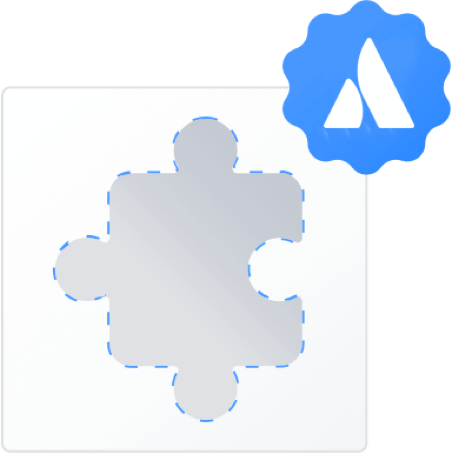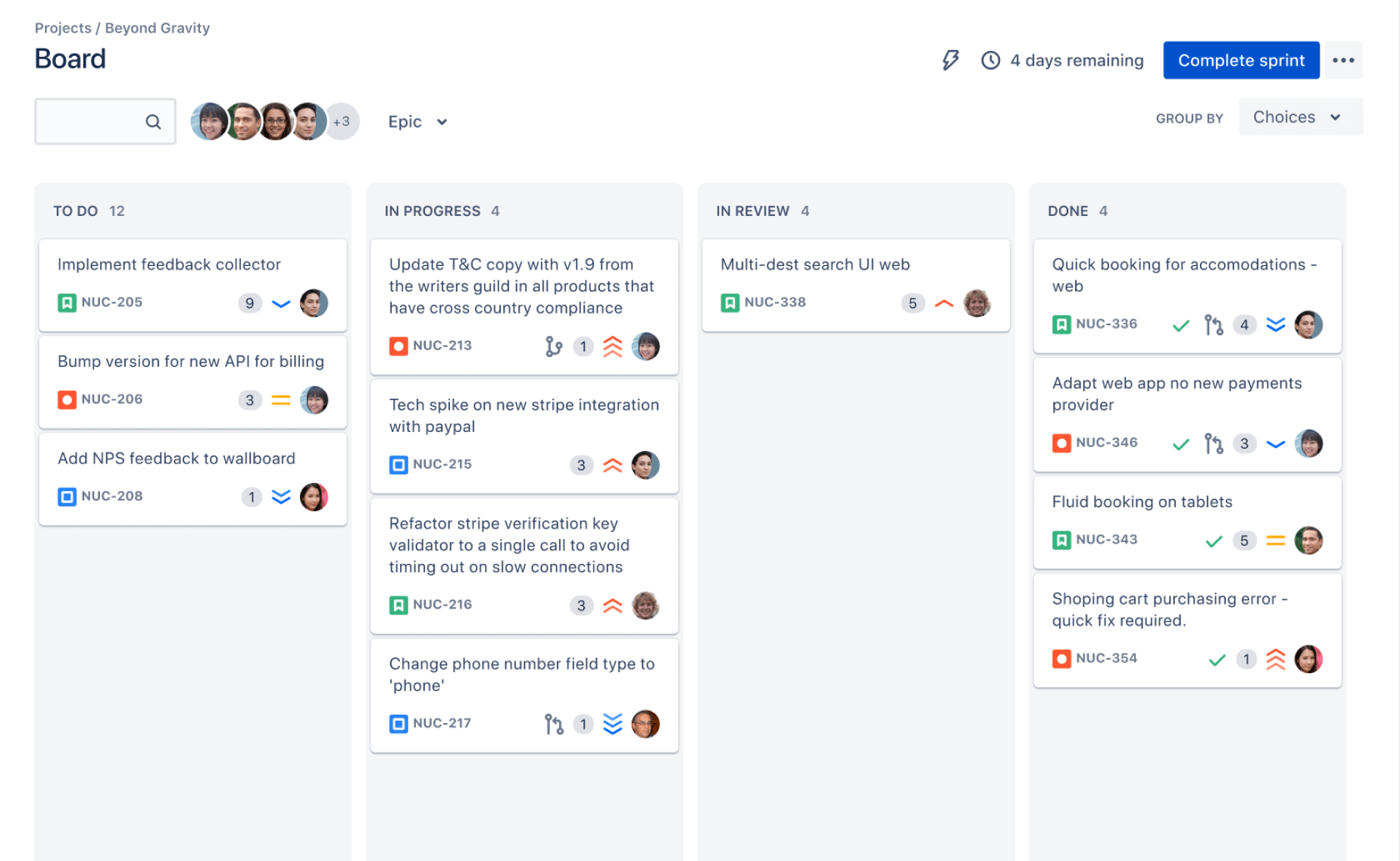Team collaboration and incremental delivery starts on the Jira board
The scrum framework enables software teams to manage complex projects by creating a culture of collaboration. The Jira board is the tool that unites teams around a single goal and promotes iterative, incremental delivery.
From silo to cohesion with Jira boards
If scrum is the framework that guides teams and their roles, events, artifacts, and rules, then the Jira board is the visual display of its progress during the development cycle. Much more than a task board, a Jira scrum board functions to:
Increase communication and transparency
The Jira board is the single source of truth for all the work a team needs to complete. Since it can be accessed by any team member at any time, everyone clearly understands what's on his or her plate, and can quickly identify any blockers.
Promote sprint planning and iterative development
At the heart of the scrum framework is the sprint, a designated amount of time (typically two weeks) for teams to build a potentially releasable product increment. The Jira board is designed so teams can organize their work around the sprint timeframe.
Improve team focus and organization
Teams miss project deadlines when they're over-committed on their workload or lose track of key milestones. Jira boards provide transparency into the team's work by slicing work into stages and utilizing burndown and velocity reports.
A Jira board for every team
Although Jira boards are ideal for highly technical teams who practice agile methodologies, teams of all types can take advantage of the key concepts of scrum and use the Jira board to facilitate smooth project management. Here are a few ideas.
Software development
When thinking about the methodology, most people think of software teams that build and release code as its main adopters. This is true, and when used with a Jira board, teams can also view information like code commits, branches, pull requests, and deployment status - all in a single view.
Marketing
Marketers manage large, complex projects – such as product launches and events – that involve multiple teams and skills set. The Jira board is a great way to slice up work related to web development, asset, and content creation, design needs, and more, so every project launches on time.
Business & HR
Hiring, staffing, and informing employees of the latest company news is an internal marketing project in itself. When it comes to updating career and company information on the website, creating internal communication hand-outs, and more, Jira boards are an excellent tool to track the status of every piece of the project.
Jira comes with a comprehensive set of agile features that help your scrum team perform these events with ease.
Key terms and concepts to know
If you're new to the Jira board, there are a handful of terms to familiarize yourself with before you get started. See the full glossary here.
Sprint
A sprint is a short, time-boxed period when a team works to complete a set amount of work during which a "done," useable, and potentially releasable product increment is created. Learn how to use sprints in Jira.
Backlog
In scrum, the backlog is owned by the product owner. A product backlog is a prioritized list of work for the development team that is derived from the roadmap. This can include features, defects, enhancements, and experiments that need to be done. Each item has a description, rank, size estimate, and value.
User story
Items in the backlog can be written as stories. A user story is a general explanation of a software feature written from the perspective of a user or customer. Its purpose is to articulate how a software feature will provide value.
Issue
Also known as the user story, in a Jira board, the work item (previously known as an issue) contains all tasks, dependencies, and relevant information related to a single item of work.
Epic
An epic captures a large body of work. It is essentially a large user story that can be broken down into a number of smaller stories that may take several sprints to complete an epic. Learn how to use epics in Jira.
Swimlane
A swimlane is a means of categorizing issues on the Jira board so that agile teams can easily see issues grouped by different criteria such as, the user.
Extend Jira with Apps
Take your Jira kanban board to the next level with these Marketplace apps and extensions

Learn agile with Jira and become a scrum guru
Now that you've got the basics down, check out this tutorial to learn scrum with Jira.
All the agile with even more agility
Jira supports any agile methodology for software development
